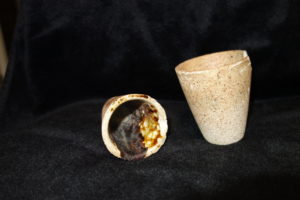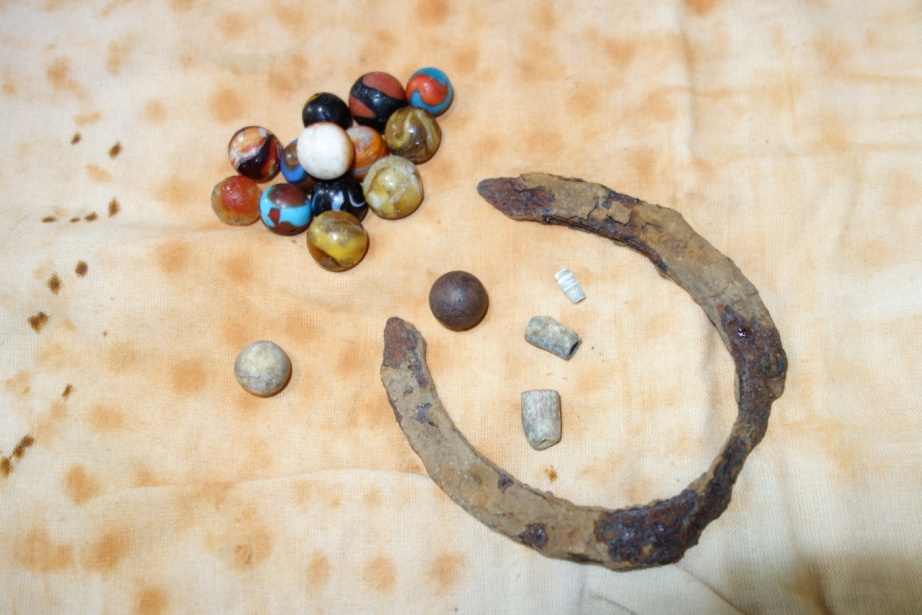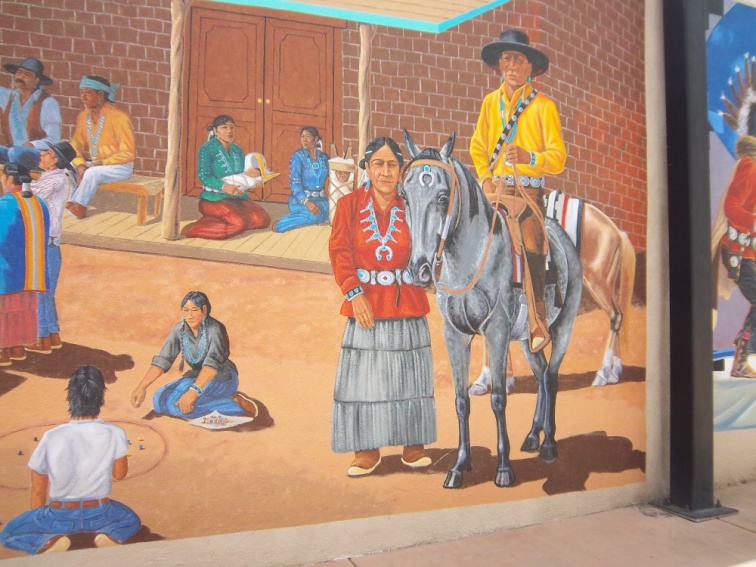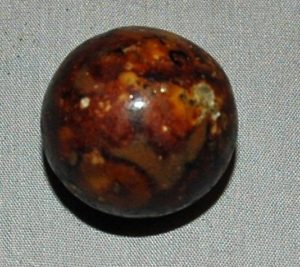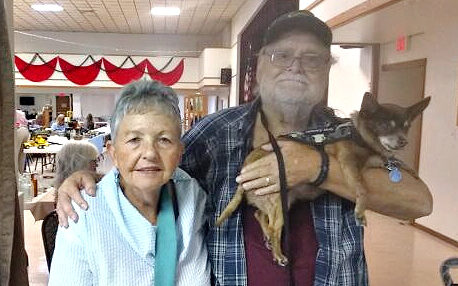
Most of the time we write about what we know or what we imagine. And most of the time that means we explore marble mysteries, history, and secrets in the parts of the United States east of the Mississippi. And, of course, we sometimes examine marble mysteries without any clear resolution.
But just look at this beautiful view of the Colorado Rockies in our feature photograph. We have long wondered about marbles and marble play in the old West. Did the children, and perhaps adults, carry marbles West with them? Were there marbles in the mining towns, the cattle towns, the forts and outposts, and all the towns in between? How did the children, and, yes, the adult men, get any marbles to play with?
We have long wondered. Once long ago we saw a shooter-size clay marble allegedly dug in a dump in Jerome, Arizona. Jerome is a former copper mining town and home to the United Verde Copper Company which started in 1883.
And, more recently, when we met Chase Pipes, Co-Owner of the Relic Room in Sevierville, Tennessee, we thought again about Marbles in the Old West.[1] Chase has produced a number of compelling videos about relic digging and some videos feature marbles.[2]
The First Draft Of History
We have always believed that local newspapers are the first draft of history. We realized this anew while writing stories like “Grandpa’s Marble Stories” (https://thesecretlifeofmarbles.com/grandpas-marble-stories/) and, more recently, “A.L. Dyke: Man of Mystery” (https://thesecretlifeofmarbles.com/grandpas-marble-stories/).
Old West newspapers are excellent resources to hear the actual voice of the people. They are often written in the vernacular, they reflect local events at the ground level, and they are a product of their time and place. Because of this we have had to leave some news stories, which we found and read, out of this story. The language, focus, and the reflection of the times are simply too raw for this website.
Still, we are sure that you will find some nuggets in this post to make you wonder, smile, and, we hope, to learn something new about marbles and marble play from long ago.
https://chroniclingamerica.loc.gov/
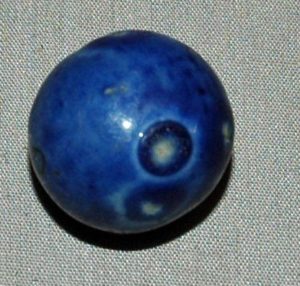
Our primary resource for this story was Chronicling America at the Library of Congress. However, we were also fortunate to meet a history Registrar, Archivists, and Researchers all across the West. We met them by telephone and electronically and have enjoyed our work with each of them.
Voices From The Old West
Photograph Courtesy Wyoming State Museum, Cheyenne*
We make no attempt to either define or delimit the “Old West”. We know that some of you will point out that we “missed” or left off some states. We agree; and we may search these later. There is no rhyme nor reason why we chose some states but not others. And there was no scientific reason why we chose the dates 1850 to about 1900. We simple relied on what we have learned in our travels, in the history and archaeology classrooms and lab, and our own historical explorations and long hours of research.
We have learned something while researching this story and we hope you do, too, and that, like us, you hear the voices from the past talking to us about marbles!
The News Clips
“A foot race for marbles took place on Sunday between a couple of Tombstone youths. A large crowd was there to witness the race. Betting was lively and over 500 marbles changed hands on the result.”
Tombstone Epitaph, May 03, 1891, Image 5[3]
Well, at least they weren’t playing marbles on Sunday!
About the Tombstone Epitaph, Tombstone, Arizona
The Epitaph was first published in 1880 (1887) by John P. Clum and others and it is still in circulation today. It’s reported that some of Clum’s friends “thought the name alone would kill the paper” but “Clum took pride in his morbid creation.”
Tombstone
True, the OK Corral is on East Allen Street in Tombstone. Still, we are told, “Arizona has never been the wild, “gun-toting,” “shoot-em-up” place it has been made out to be. It was very modern, sophisticated, and extremely wealthy.
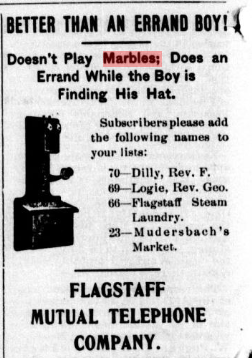 Telephones were installed in Tombstone in 1882. By 1883, the City had two gas companies; three water companies; two ice companies; five ice cream parlours; fresh seafood was delivered daily from Baja, Mexico; west of the city was a track for horse racing and on the infield of the racetrack was a baseball diamond. Tombstone had a baseball team from 1882-1929. The first swimming pool in Arizona Territory was built at the north end of Fifth Street. The mining camp became a metropolis that rivaled San Francisco, California.”[4] So, of course they had marbles!
Telephones were installed in Tombstone in 1882. By 1883, the City had two gas companies; three water companies; two ice companies; five ice cream parlours; fresh seafood was delivered daily from Baja, Mexico; west of the city was a track for horse racing and on the infield of the racetrack was a baseball diamond. Tombstone had a baseball team from 1882-1929. The first swimming pool in Arizona Territory was built at the north end of Fifth Street. The mining camp became a metropolis that rivaled San Francisco, California.”[4] So, of course they had marbles!
Next Clip!
The Coconino Sun, September 23, 1899, Image 6
Speaking of telephones: check out this 1899 Flagstaff Mutual Telephone Company add. We are a bit confused, but it looks like the newspaper told you who was new to the Company. Subscribers wrote their own “telephone book”!
The Sun was published from 1898 until 1978 for Flagstaff which is the County Seat of gorgeous Coconino County.
Maybe we know why this next newspaper had such a short life?
The Union. [volume], June 14, 1878, Image 3
“Why is a boy asking his father for small change for marbles like a wife seeking a divorce?—because he wants alley-money.”
The Union was only published in St. George from June until November 1878. It’s circulation was St. George and Washington County, Utah.
The Democratic Leader, September 18, 1885, Image 4
“Marbles by the Millions” This story was first published in Indianapolis, but the editor in Cheyenne, Wyoming, felt it appropriate to his readers too.
“A few days ago at the office of the custom surveyor, a reporter picked up an item which excited his curiosity. He was told that a certain firm paid about $150 duty on the marbles imported from Germany.
“An invoice of marbles,” said the reporter, “on which the duty amounts to that much, certainly must contain enough of these playthings to keep all the boys in the United States busy for some time.”
Well,” said the deputy custom house surveyor, “you can count for yourself. The invoice consists of sixty cases, each case containing 1,000 gross of marbles.”
Taking in consideration the difference in the size of the marbles, and that each case was said to contain 125,000 marbles, this would make the entire invoice consist of about [indecipherable: 7,500,000]….”
And then the reporter considers the question which we have asked time and again in many of our stories. And we are confident that no one has an answer.
“Marbles belong to a class of playthings which can not very easily be broken or otherwise destroyed, still they disappear in a somewhat mysterious manner…
Of the [indecipherable: 7,500,000] which have just come across the ocean, forming a bulky, but not very valuable part of the cargo of one of our large ocean steamers, not many will be left in a year from now and a new supply will have to be ordered from [indecipherable: Steinach]. Steinach is in the Sonneburg[5] district [in Germany].”
The reporter goes on to tell us that marbles made of glass, porcelain finished and a painted surface, and stone were also imported from Germany.
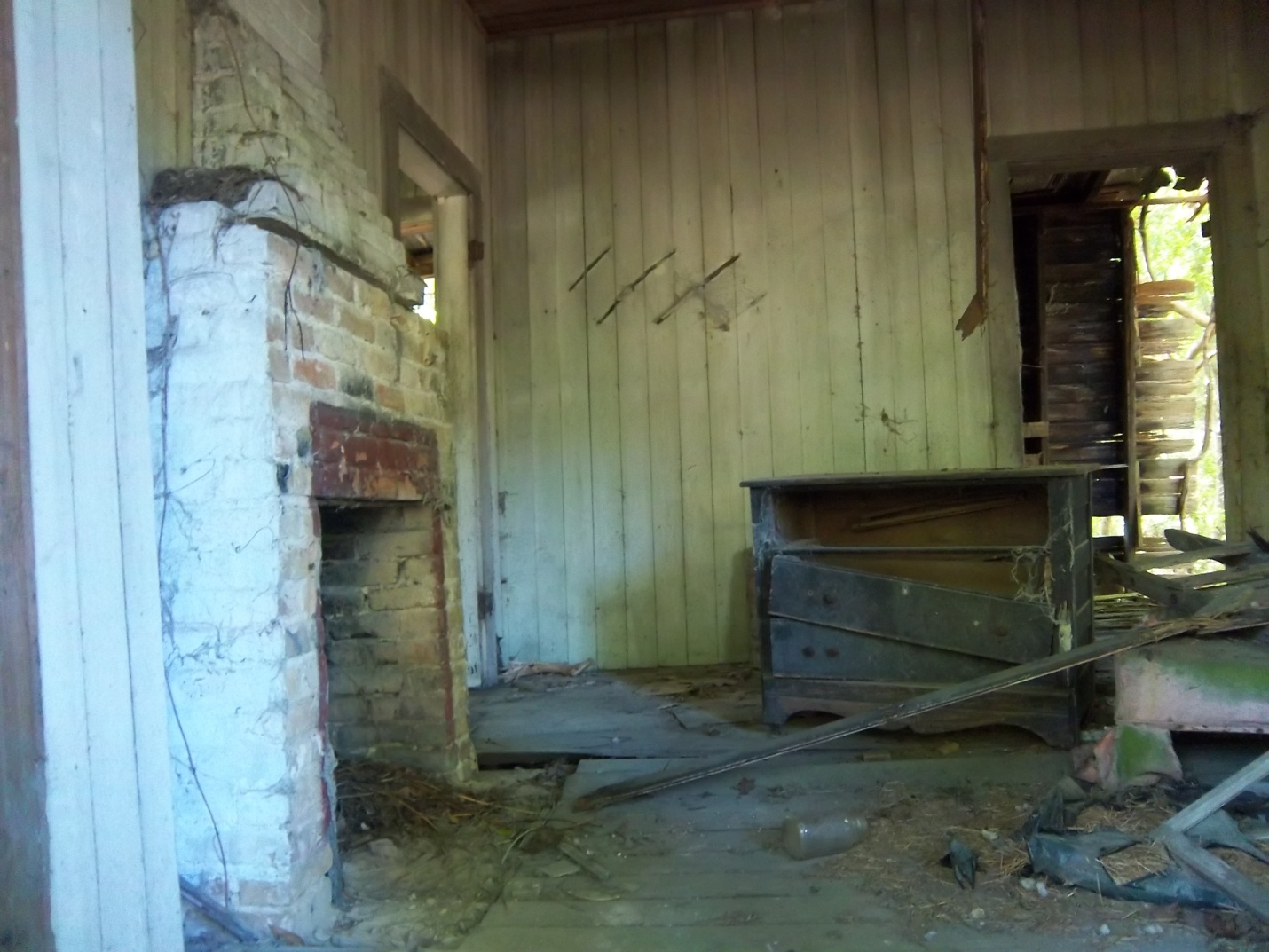
About The Democratic Leader. (Cheyenne, Wyoming) 1884-1887
The Leader was published in September 1867 just months after the end-of-track town of Cheyenne, Dakota Territority, was established. The mast of the paper was changed to Wyoming in 1868 long before the state was admitted to the Union. Circulation was both Cheyenne and Laramie.
Cheyenne, Wyoming
Union Pacific locomotives hauled the marbles into Cheyenne from the East. The railroad arrived in 1867 and many wondered if the community would survive. Other settlements at the terminus of rail lines died soon after the line was finished.
General Greenville Dodge established Crow Creek, with nine settlers, in July 1867. The settlers were in Dakota Territory. It was renamed Cheyenne for the Great Plains Indian tribe. Wyoming was admitted to the Union as a state in 1890.
A military outpost was established nearby to protect the railroad.[6]
Marbles In The Pack & Saddlebags
Before we read some more old newspaper clippings, let’s look at one of our central questions. Where did the marbles in the Old West come from? They were brought in by iron horse. But we have no doubt that they were also brought in mule packs and saddlebags.
Mules didn’t eat as much as horses and they were tough and dependable. Many soldiers, cowboys, and travelers preferred to ride mules. We are told by Microsoft Copilot that a well-trained pack mule could carry about 20% – 30% of its body weight. A 1,000 pound mule, for example, could carry up to 200-300 pounds of cargo. They were used in the Old West for hauling goods over rough terrains. We have no doubt that marbles, a heavy load with a disproportionate value, were carried in mule packs and mule trains.
Saddle bags were used on horses, mules, and donkeys. These bags were used by the riders to keep their needed trail kits, water, ammunition, and so on. And marbles. We have no doubt that marbles were rattling around in many an Old West saddle bag.
We have never had an opportunity to ride horses much, so if you know all about horse tack then please press the Contact Button and tell us about it. Still, we do know that there a number of different kinds of saddlebags. We are most familiar with the paired or dual bag which is attached to the horse’s hips on either side of the cantle if the rider has one. The candle is the riders bedroll. A pommel bag sits on the front of the saddle and the rider could even carry a small horn bag fitted over the saddle horn. Now, aren’t you convinced that some marbles were carried into Cheyenne, Flagstaff, Tombstone, and all the towns in the Old West in saddle bags?
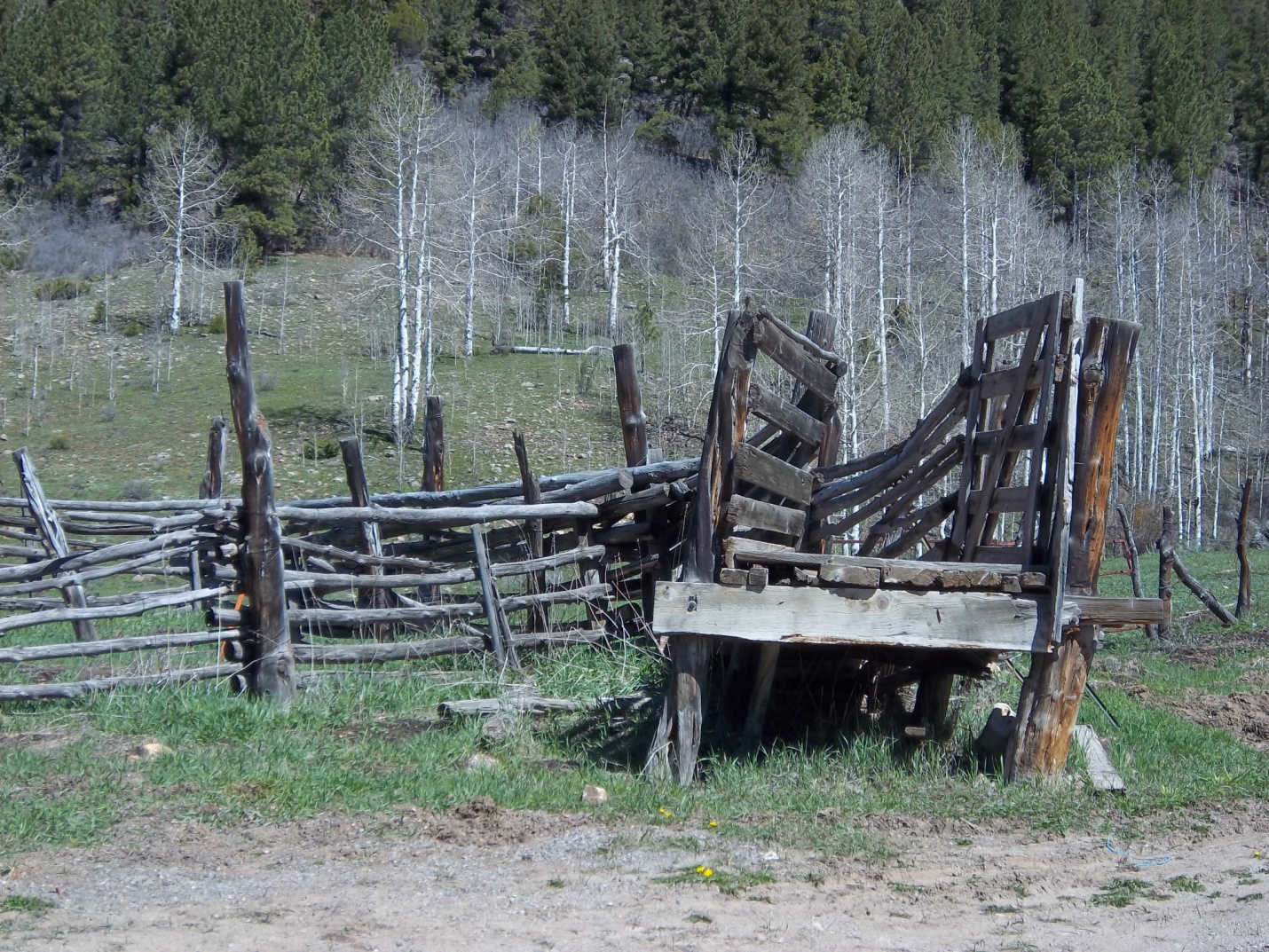
Wagons, Ho!
Marbles were also bounced all over the Old West in every kind of wagon imaginable. This is from the online story “Hoofs and Wheels: Transportation in the West”: “Itinerant peddlers were a fixture of American life in the 19th and early 20th century.” Peddler wagons had a custom superstructure built onto an existing wagon.
“The peddler’s wagon features shelves and compartments to organize canned and dry goods and a rail around the top to keep crates from falling off.” Sometimes these wagons had a worktable in the back and a foldable canvas top to help shelter the peddler.[7]
Other Old West wagons include: the Conestoga; teamsters using as many as twelve oxen to pull supply trains of freight wagons; and teamster-driven individual supply wagons. You can read all about these wagons online at The National Cowboy & Western Heritage Museum in Oklahoma City.
The Modoc & The Butterfield
The first thing that we can say about the Old West stagecoach is “uncomfortable”! While bumpy and rattley the coaches could cover up to 100 miles a day over terrain which would require a 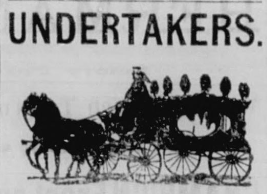 four-wheel drive today. We have read that up to nine people could ride but that their legs and feet would be all over each other! And stagecoaches were never intended to be a supply wagon. The passenger’s luggage was strapped to the back of the coach and on top. Any room left may have been used to carry packets to individuals who had ordered specialized goods from the West coast or from back East. Still, we feel confident that somewhere onboard some stage there were a lot or two of marbles!
four-wheel drive today. We have read that up to nine people could ride but that their legs and feet would be all over each other! And stagecoaches were never intended to be a supply wagon. The passenger’s luggage was strapped to the back of the coach and on top. Any room left may have been used to carry packets to individuals who had ordered specialized goods from the West coast or from back East. Still, we feel confident that somewhere onboard some stage there were a lot or two of marbles!
While the train was the ideal marble-hauler in the Old West, there was no rail line in Washington County, Utah, until 1923. St. George had to rely on supply wagons and the stagecoach. The nearest rail depot was in Modena which was about 65 miles away by road.
Tombstone, Arizona Territory, was also remote and it had no rail service until after 1900. Tucson, about 75 miles away, was the closest depot. Tombstone, like St. George, relied on supply and freight wagons as well as the Modoc and Butterfield stages.
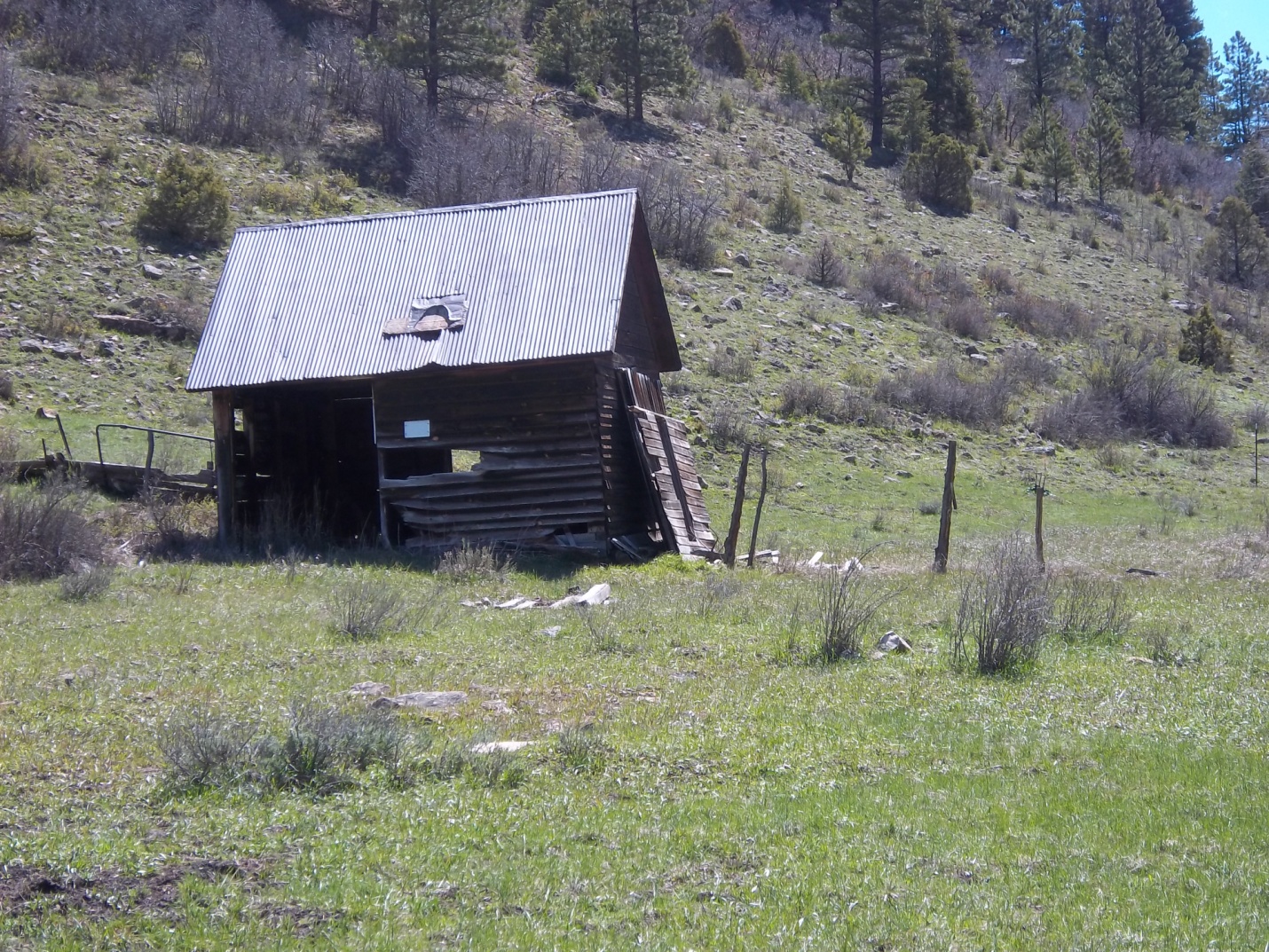
Owyhee Bullion. [volume], February 21, 1867, Image 4
“Our old friend Brown, a few nights since, came home very late from a siege of pool. His wife was asleep. When she woke up in the morning, she found upon the floor a marble which had dropped from her husband’s pocket when he came to bed, upon which was the figure “17”. ‘What is this?’ she said to her lord.
He opened his eyes, looked, blushed, was confused and stammered: ‘Why, why, it’s a marble, ain’t it? ‘ ‘Yes,’ she said, ‘but what are you doing with a marble in your pocket?’ ‘In my pocket?’ well—ah! the fact is I’ve had that marble in my pocket for the last thirty years—ever since I used to play for keeps with Bill—–‘ ‘Indeed’ incredulously asked his wife, ‘But what are these figures on here for?—‘what does “17” mean?’ “17” mean!’ said he hesitantly. Oh, “17”, why that was the number of marbles Bill owed me when he quit playing; he marked it on there so I wouldn’t forget”.
Should you really want to go down a deep rabbit hole, research a 19th century pool game which used 17 balls! To our knowledge it remains a mystery. In the 19th century pool or pocket billiards used sixteen balls and there is no pool game that exclusively used seventeen balls! Know something about seventeen ball pool? Please press the Contact button, please!
About Owyhee Bullion. Silver City, I.T. Idaho 1866-1867
The Bullion was published weekly on Thursdays and it ran for exactly one year. At one time it had 200 subscribers. Circulation was Silver City and Owyhee County. Today Silver City is a ghost town, it is overseen by the Bureau of Land Management, and it is listed on the National Register of Historic Places.
It was founded in 1864 after silver was discovered at nearby War Eagle Mountain. Both gold and silver were mined in Silver City and it became one of Idaho’s major cities. The rail line never made it to Silver City, and, like St. George in Utah, the city relied on coaches and freight wagons.
Meanwhile, Deep in the heart of Texas
San Antonio, Texas, Daily Light. [volume], 1886 – 1907, June 30, 1894, SUPPLEMENT, Image 9
“Jimmie’s Perplexity. I am terribly mixed about things of late, My mind’s in a regular garble; Why is it that agates ain’t agate at all, And marbles are not made of marble?” From —Harper’s Young People.”
Up The Road To Dallas
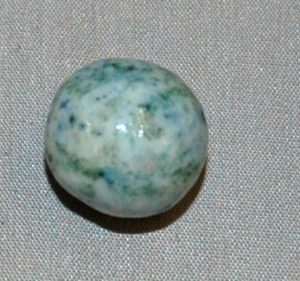
Photograph Courtesy Wyoming State Museum, Cheyenne*
We have concluded so far that there were really few differences in marble play in the Old West and the East during the burgeoning 19th century. All across the territories and states, West to East, children played without supervision, they determined the rules of marble play, and they developed any system of fairness which they felt necessary. However, what was reported to have happened in Dallas in 1886 shocked us. We know that crimes were committed over marble play, but nothing like this!
The Brickbat
The Dallas Daily Herald. [volume], 1873 – 1887, December 11, 1886, Image 8
Editor’s Note: In the 19th century people used a number of words to describe African Americans.
“Assault With Intent to Kill August Williams, a colored lad who manages to get himself before the justice of the peace about once a month, was before Mayor Brown this morning on the charge of assault with intent to kill. He was playing marbles with another colored kid, Campbell Saunders, when a quarrel arose over the game and a fight ensued, in which Williams struck Sanders over the head several times with a brick, cutting several severe gashes. May Brown sent him to Judge Braswell, and from thence he went to jail.”
Attempted murder over marbles? One thing that caught our attention is that Williams hit Saunders “several times.” It’s easy to establish intent in this case. We don’t know the final outcome for either Williams or Saunders, but we think we have a pretty good idea what happened to Williams.
The Wheel of Fortune
Morning Appeal, Carson City, Nevada, 1877- 1906. [volume], October 14, 1888, Image 3

This next story is much too long to report verbatim in this post, but it is a remarkably interesting account, and you might want to go to Chronicling America and read it for yourself. It actually reads like Mark Twain rather than hard local news. The headlines give you a good idea of the show that was going on. We imagine it was like an old-fashioned traveling carnival.
“Raiding the Sports —- The Sheriff Makes a Big Capture of Gambling Implements—Yesterday afternoon Sheriff Ullrick was nosing around back of Bigler’s stable in the Northeastern part of the city, when he heard a voice calling out ‘Lay’er down there! Lay’er down I tell ye!” Then more voices kept calling out ‘Pay that bet on the red.’ ‘I’ll go ye a couple on the black.”
What we found so amazing about this story is what Sheriff Ullrick saw next: a homemade ‘Wheel of Fortune!”
“As he neared the spot he found about twenty boys congregated about a rude ‘Wheel of Fortune’ device, copied after the one run by Ike Issacs at the District Fair…. The ‘Wheel of Fortune’ consisted of an old buggy wheel fixed up on a spindle, and all along the rim wire nails were driven. A piece of board ran up above the wheel, and from a projecting peg a piece of leather was nailed which flipped along over the nails as the wheel revolved. Between the nails spots of playing cards were tacked, and there were two big blanks ‘for the game.’”
Of course, there was no official gaming license in sight and everybody, except perhaps the dealer who fell on the ground “like dead”, scattered throughout the sagebrush. The Sherriff did break up the game and he then confiscated all of the evidence.
Something caught our attention. One piece of evidence confiscated by the Sheriff was a “…book in which was a regular racing programme.” While most races were for Lucifer matches, the “third race” was “for all size boys, 150 yards. Entrance fee 10 marbles; 1st prize, 50 marbles, 2nd prize, 25 marbles.”
There is a denouement to the story and we learn that there may have been a sort of “license” after all.
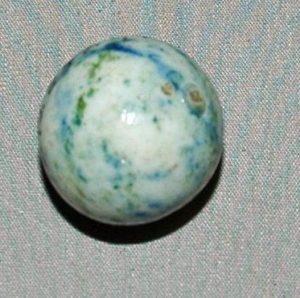 Gambling With Marbles
Gambling With Marbles
Photograph Courtesy Wyoming State Museum, Cheyenne*
We have read any number of stories about marbles being used to gamble. Archaeologists and historians have long told us that marbles found in many cultures worldwide, in pre-history and in history, were used both for play by children and by adults to gamble. But this Carson City story opened our eyes to a whole new world.
Up until now when we thought of marbles used to gamble we thought of “shooting marbles” in a traditional way, but we have learned that marbles have also been incorporated into much more complex gaming. Marbles have been used in any number of different games of chance as money line bets and as payout. We had never realized this before. We have long known that both marbles and gaming are interwoven into societies worldwide, but we had never understood exactly how important marbles could be to those who play the more complex games.
Editor’s Note: In the 19th century people, and news editors, used many words which may be upsetting and offensive to 21st century readers.
Arizona Republican. Phoenix [volume], January 10, 1896, Page 7, Image 7
Hoisted On His Own Braces
“Flagstaff Democrat: One of the favorite ‘games’ of the mischievous boys during play hour at the public school is said to be the hanging of a companion to a rafter in the basement, while his tormentors relieve him of his surplus marbles and the other remarkable things that a small boy’s pockets usually contain. The victim’s suspenders are used as a noose. Some day one of the boys is liable to die from suspendered animation.”
An hour for recess? There is just no telling what can happen with that much time off! Wow, talk about “where the wild things are.”[8]
About Arizona Republican. [volume] (Phoenix, Ariz.) 1890-1930
The first issue of the Arizona Republican was only four pages. It was circulated in Phoenix and Maricopa County. The Skull Valley Historical Society[9], in North central Arizona tells us that the first transcontinental railroad to cross Arizona was by Southern Pacific which ran from Los Angeles, through Yuma, (1877), Phoenix, Tucson (1880) and on to El Paso, Texas, by 1881.
Phoenix had only been the Territorial Capital for one year when the first Republican was published. It was then a small and very dusty town. Still, with the iron horse huffing and puffing through town there was no excuse not to have marbles! The Republican grew in the 20th century to be a major metropolitan newspaper with Associated Press coverage.
Editor’s Note: In the 19th century people, and news editors, used many words which may be upsetting to 21st century readers.
Morning Appeal. [volume], Carson City, Nevada, (1877 – 1906) February 24, 1878, Image 2[10]
“The Childlike Indian —Says the Reveille of Wednesday: The sight is such a common one in Austin as to never excite remark, yet it must seem odd to the eyes of a stranger to see a big overgrown Indian knuckling down to a game of marbles ‘for keeps’ with a ten-year old white boy. Not a day passes in this town, but on some dry spot on the sidewalk on Main street can be seen Indians, who are fathers of half grown boys and girls playing marbles with small white boys, with an earnestness of purpose and an absorbing interest as though playing marbles were the only thing in life worth living for.”
This Austin is in Nevada, and we are certain that this story took place there rather than in Austin, Texas. Austin, Nevada, is on the western slopes of the Toiyabe Range and is in Lander County. It was a silver town and the Nevada Central Railroad was built to connect the town with the transcontinental railroad at Battle Mountain in 1880. So we know where everybody got their marbles! Major silver mining and production ended by 1887, but high quality turquoise, gold, and silver are still mined in small quantities. Austin is called a “living ghost town” today.[11]
The first Reese River Reveille was published on May 16, 1863, in Austin, Nevada. It remained in operation for 130 years and it played a significant part in Nevada’s journalistic history.
The Toy Store
Courtesy Wyoming State Museum, Cheyenne
Children had all sorts of games and toys back East between 1850 and 1900. For example, the ball and cup (bilboquet), rocking horses, toy soldiers of wood and lead, and early cartoons called Zoetrope. True, there were few stores dedicated to toys, such as America’s first toy store FAO Schwarz which opened in Baltimore in 1862. Most toys were bought in the mercantile store.
The Old West had toy stores, too. Just check this out:
Fort Worth Daily Gazette., January 25, 1885, Page 6, Image 6 (Fort Worth, Tex.) 1882-1891

Wait a minute. Anderson’s isn’t a toy store at all! A gun store? Well, the Old West was very different than back East in some ways! And we should note that the wagons for sale are probably not toys at all: “Toy wagons, those that are large enough to give rides to children or to haul packages of newspapers for a newsboy, were first made in the 1880s in the United States. Most were made of wood that was painted red. Newspapers were sold to newsboys by the bundle. The boys kept them in a wagon and moved around the city, shouting the headlines to sell the papers. Most of the boys were homeless, and this is how they earned a living.”[12]
Image 12 (Page 12) of The Helena Independent (Helena, Mont.), April 17, 1892, (Morning)
This story, entitled “Games With Marbles,” is by Benjamin Northup. It is much too long to report in full in this post. In fact, at three full columns, it is by far the longest story that we have ever seen about marbles. The subhead is “Boys Play for Keeps Now Just as in The Days of their Grandfathers.”
This is a remarkable piece of reporting and there is one part deep in the story which we wanted to share with you. We have a continuing interest in how children play marbles: for example, do they dig holes, draw a triangle, a single circle, or something else? We recently investigated this idea in the posts “French Marble Triangles” (https://thesecretlifeofmarbles.com/french-marble-triangles1/) and “Circles, Triangles & Holes” (https://thesecretlifeofmarbles.com/circles-triangles-holes/).
When we saw a new game in the Northup story we were intrigued. Here it is:
Three Holes
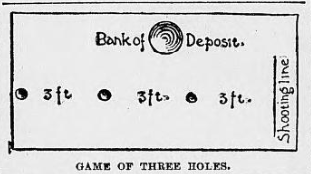 Three holes requires “…three holes, two inches wide and half an inch deep, are dug with hard, rounding sides. They should be in a line about three feet apart. Three feet from the first hole a line is drawn to shoot from. Each player puts into another hole, which may be called the bank of deposit, three marbles as forfeits or stakes.
Three holes requires “…three holes, two inches wide and half an inch deep, are dug with hard, rounding sides. They should be in a line about three feet apart. Three feet from the first hole a line is drawn to shoot from. Each player puts into another hole, which may be called the bank of deposit, three marbles as forfeits or stakes.
The order of shooting is determined as in ring-taw. The first player shoots his taw into the first hole if possible. If he succeeds, he shoots from the outer edge of that hole into the next, and from that into the last. He is then the winner and the contents of the bank belong to him. Then the boys fill up the bank again and the second player takes his turn.
A straight run is seldom accomplished, however. When a player misses a hole he lets his taw rest where it stops and gives way to number two. The second player may either shoot at the first hole or at the taw of number one, but he cannot kill him by hitting the taw unless he has been in one or more of the holes. If, however, he has made the hole and afterward hits number one’s taw, then he wins from its owner all the marbles he has won since the game began, or if he has not won any, one marble as a penalty. No player can kill an opponent until he has made the first hole, but he can shoot at an adversary’s taw and drive it away from its position.”
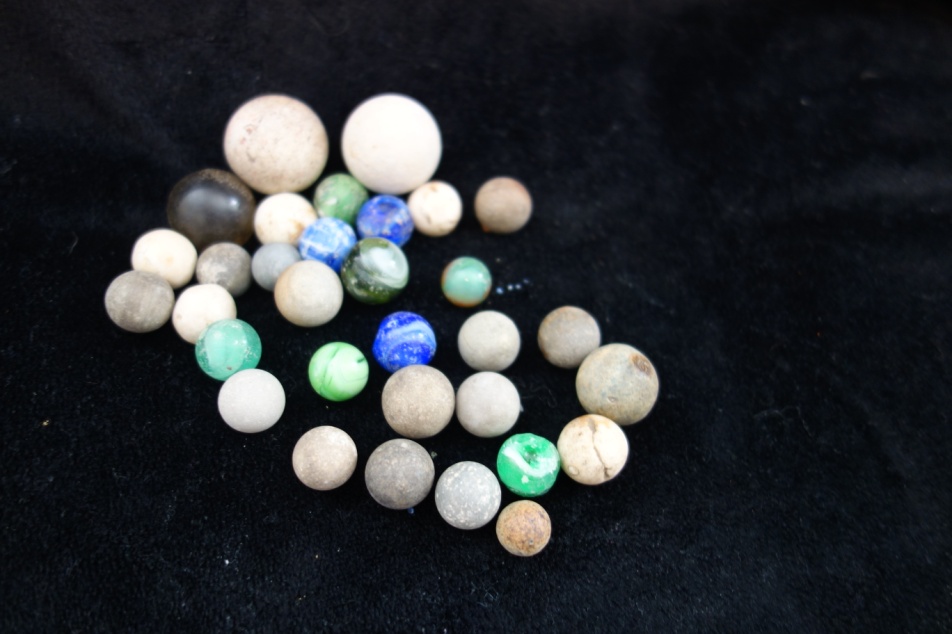
After reading about August Williams and Campbell Saunders, this talk about shooting and killing in Three Holes makes us shiver. But you have to admit, this is a game unique to the Old West.
About The Helena Independent (Helena, Mont.) 1875-1943
“Founded in Deer Lodge, Montana, on October 12, 1867, The Weekly Independent newspaper moved to Helena, on March 27, 1874, after a fire at the Rocky Mountain Gazette provided an opportunity for another newspaper in Helena. The first publishers of the Independent, James C. Kerley and Addison Smith, had moved to Helena from Deer Lodge, where Smith served as a county treasurer and a travelling correspondent for a Deer Lodge paper.”[13] Helena became the Territorial Capital of Montana in 1875.
Cash’in
We’re not finished. We found so many more stories that we would like to share. But there comes a time to cash in your marbles. Still, we haven’t told you about the morality play involving marbles that was reported in the Hoof and Horn on June 06, 1889, in Prescott, Arizona. And there is a good story in the “Young Folks Column” in the Arizona Weekly Enterprise, July 06, 1889, in Florence, Pinal County, Arizona Territory. Oh, and there is that Bill Arp lament about marbles and other toys from The Lincoln County Leader on November 25, 1882. The paper was printed in White Oaks, Lincoln County, New Mexico. New Mexico became a state in 1912.
Wrap It Up
But we will close for now. We do hope that you have learned something, had a chuckle or two, and thought about life in the Old West while reading this post. We encourage you, if you want to learn more, just visit the Library of Congress Digital Newspaper Archives.
We learned that there are many similarities in children’s play, marble games, and marbles in the Old West and the East during the second half of the 19th century. Marbles were delivered to children in Wyoming, Arizona, Texas, and so many more stations by rail car just as they were in South Carolina and Massachusetts.
Stagecoaches ran in Connecticut in the late 18th Century just as they did in the Old West between 1850 and into the 20th Century. And wagons delivered marbles all over the United States throughout the 19th and until the mid-20th Century in many rural regions.
Marble games were fundamentally the same in the East and West. We have no idea how well Northup’s Three Hole was accepted by the Helena kids. Undoubtedly, there were games created by children in the West which were local favorites just like in the East. Children were unsupervised, they created or adopted rules of play, they were creative, and, yes, they did sometimes get in trouble with their marble games.
Still, there is an “edge” to Old West marble play that you don’t find back East. Children played hard, and disputes were not always settled amicably. The Sheriff sometimes got involved. And adults made remarkable use of marbles while gambling.
Bottom line: there were tons of marbles in the Old West. Marble play was often rough and tumble. And, while many things are very similar West and East, Old West marble play was singular, often involving fisticuffs and more, and it was almost always for keeps.
We will leave you with a bit of Western poetry.
The San Antonio Light (1883-1886), July 25, 1883, Image 3
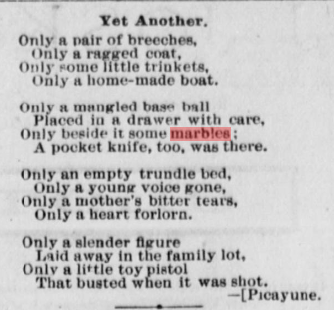
References
* Special thank you to Mariah Emmons, Registrar, Wyoming State Museum @ Wyoming State Museum
- We were researching the story “Marble History Flashback: Privy Marbles” (https://thesecretlifeofmarbles.com/)when we met Chase in the Relic Room. ↑
- See “Chasing History” @ https://www.youtube.com/channel/UCcwbNrYd4syBMKERZofrRUQ & https://www.facebook.com/therelicroom/ 5/12/2024 ↑
- You might want to check https://tombstonechamber.com/about-tombstone-az/tombstone-history/ 5/12/2024 ↑
- https://discovertombstone.com/history/ (5/12/2024). Arizona was formerly part of the Territory of New Mexico. It became Arizona Territory in 1863 and a state in 1912. ↑
- To learn more check Paul Baumann’s Collecting Antique Marbles Identification and Price Guide, 4th Edition, Chapter Two, “Clay and Crockery” starting on page 22, and Chapter Three, “German Swirls” starting on page 37. Also read our story “The Lauschaer Glashütte and the Origins of Glass Marbles” @ https://thesecretlifeofmarbles.com/modern-glass-marbles/ ↑
- https://www.wyohistory.org/encyclopedia/cheyenne-magic-city-plains 5/13/2024. ↑
- Stagecoach, Iron Horse & Wagon: Transportation in the West – National Cowboy Museum (5/14/2024). This site has more photographs of wagons, etc., than any other we have ever seen. Now we want to view the Museum! If you do visit visually then be certain to look at the 1914 Alzada, Montana, Stage! ↑
- A nod to both Maurice Sendak & Luke Combs. ↑
- @ https://skullvalley.org/community-2/about-skull-valley 5/14/2024↑
- While we don’t know the artist, we saw this beautiful mural on a wall in Grand Junction, Colorado, in 2019. ↑
- @ https://austinnevada.com/rich-history 5/16/2024. ↑
- https://www.heraldstaronline.com/news/national-news-apwire/2021/07/toy-wagons-were-first-made-during-1800s/ 5/17/2024 ↑
- https://www.loc.gov/item/sn83025308 (5/17/2024). To see some beautiful photographs and to read a bit about Deer Lodge’s history check: Deer Lodge | Southwest Montana (southwestmt.com) (5/17/2024). For Helena history and more check Helena As She Was – An Open History Resource for Montana’s Capital City (helenahistory.org) 5/17/2024 ↑

